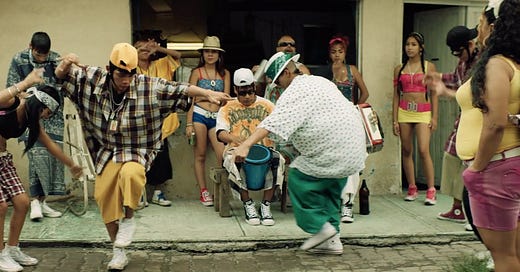I got this list from Dra Bianca Altair - my boss dentist friend, and one of my most favorite people! We dance together. She dances well and I also dance.
There are 8 dance styles on the list, but I’ll divide it into two parts since I struggle to edit and I want to include ALL of the videos ha. Here is part 1:
1. Guaracha
The guaracha, as a style of song with a fast rhythm and humorous text, always described some political or social fact, some situation about a popular character or some attitude that was described in a picaresque way.
Musically, the guaracha often combines or incorporates the bolero, rumba, clave, and other distinctly Cuban rhythms. It usually follows a 6/8 measure or a 3/4 with 2/4 sequence
2. Cholombiano (Monterrey)
The cholombianos, are a distinctive youth subculture only found in the working class suburbs of Monterrey in northern Mexico. Their name is a hybrid of cholo style – another subculture of predominantly Mexican migrants in Los Angeles who wear baggy trousers, baseball jerseys and bandanas tied around the head, and colombianos – because of their music taste and love of dancing to cumbia rebajada, wistful Colombian cumbias slowed-down “to make it last longer”, as Ulises romantically puts it. They dance to cumbia with expressive spins and hand gestures and low, short steps. Historians suggest the style may have come from enslaved Afro-Colombians dancing in shackles, with limited motion.
VICE (2011), featuring the work of Stefan Ruiz
3. Danzón
oh there’s a movie too - Danzon 1991
Ballroom dancers would argue that the danzón is a metaphor for romance, like a graceful waltz through history, and with good reason. It’s legacy resonates in dances such as salsa, mambo, cha-cha and bolero. It also shares similarities with American music traditions, such as jazz and big band swing.
Danzón was also very popular in the Gulf Coast state of Veracruz, Mexico, because of the strong Cuban influence in the region. Later on, danzón developed in Mexico City, specially in the famous Salón México; it has survived as a dance longer there than in Cuba. Danzón also flourished in the city of Oaxaca, and many famous danzones were composed by Oaxacan musicians such as the famous Nereidas and Teléfono de larga distancia, both works of Amador Pérez Dimas, from the town of Zaachila, near Oaxaca city.
4. Tecno Cumbia
"Techno Cumbia" is a song recorded by American singer Selena for her fourth studio album, Amor Prohibido (1994). Musicologists believed "Techno Cumbia" predated the Latin urban music market and found that Selena spearheaded a new style of music. The song posthumously peaked at number four on the United States Billboard Hot Latin Songs and Regional Mexican Airplay charts.
"Techno Cumbia" is a Spanish-language uptempo techno-pop cumbia song. It draws influences from Latin dance, dancehall, rap, and club music. "Techno Cumbia" incorporates "rhythmic shifts from accentuation on off-beats to accentuation on the beat". The "hey, ho" is a reference to American soul singer Ray Charles' call and response 1950s single "What'd I Say", used under a "Latin-style drumbeat".
Lyrically, Selena calls on people to dance her new style the "techno cumbia" dance and "humorously" calls out people who cannot dance cumbia. Italian essayists Gaetano Prampolini and Annamaria Pinazzi described the lyrics of "Techno Cumbia" that "summons everyone to the dance floor".



